Don’t want to have your smartphone in your pocket while you’re flying over the trails but still want to share your ride on Strava? Or do you want to perfect your suspension set-up and make full use of your suspension travel without endless trial and error or laboriously going through the steps of a set-up guide? Mondraker’s MIND telemetry system promises to be the answer. We found out what it and the myMondraker app are really capable of in our first ride review.
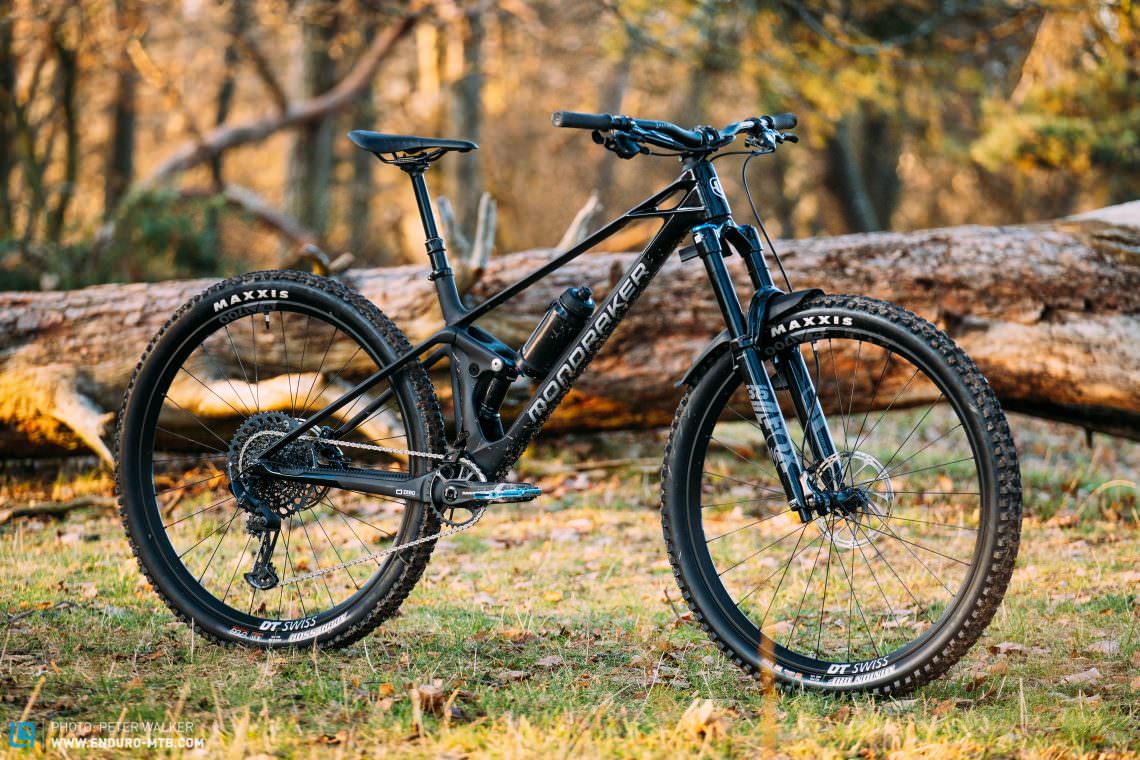
Mondraker’s MIND system lets you record your ride and includes an easy-to-understand setup guide aided by videos and diagrams. In addition to your GPS location, the system records the movement of the suspension, including bottom outs and air time. The all-in-one system, currently available on four Mondraker models, requires only your smartphone and the myMondraker app. Unlike other GPS trackers, the MIND system isn’t limited to just recording where you went, allowing you to track how much suspension travel you used on each part of the trail. Even if it wasn’t any at all: keyword, airtime! This can be viewed, just like the suspension travel utilisation, in your recorded ride, letting you see which drop you hit and which jump was the biggest during the descent. We tested the system fitted to a Mondraker Raze R where it monitored 150 mm travel up front and 130 mm at the rear.
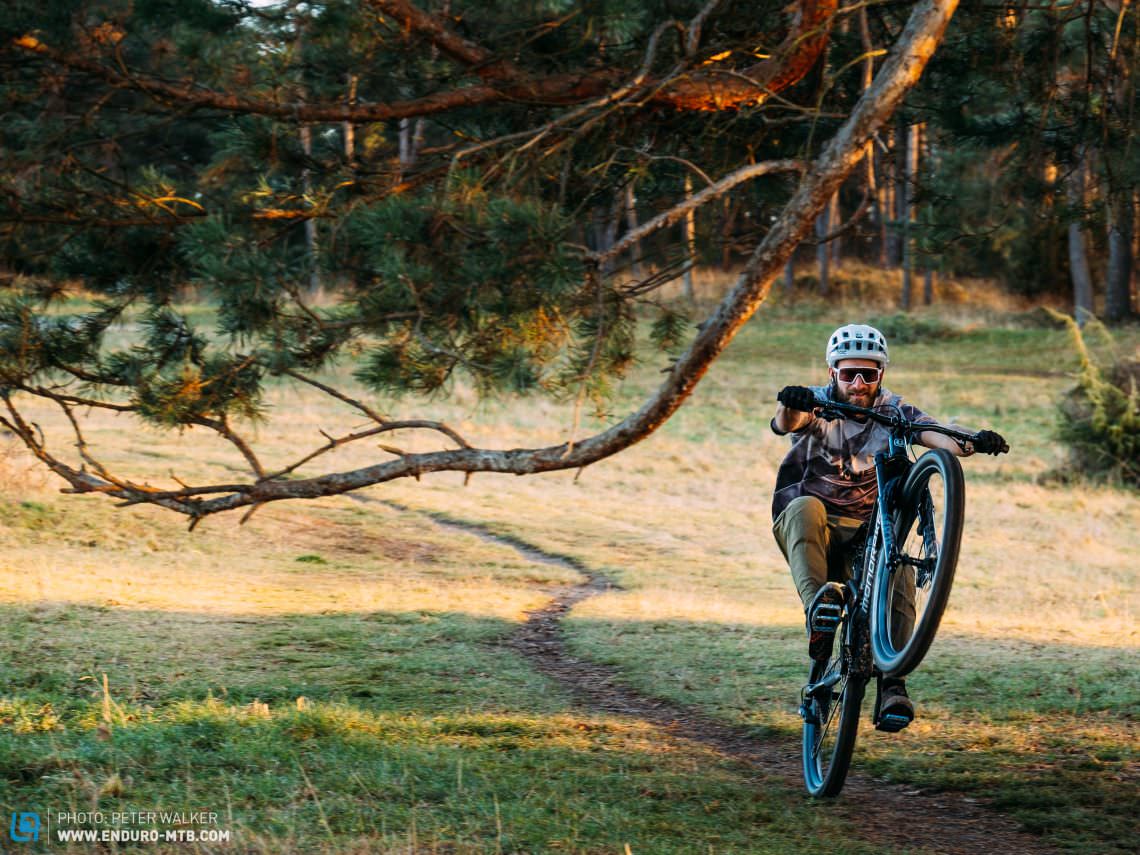
How well do you know your suspension? How much information can you glean from the O-ring on the fork and shock stanchions? Sag when stopped and the maximum travel used. But except for your gut feeling, you don’t really know what your suspension is doing in between while you’re riding. Unless of course, you use a telemetry system like the Quarq ShockWiz or the sleekly and permanently integrated MIND system on Mondraker bikes, which takes over many additional useful tasks. We’ve divided its functionality into three sections: before, during and after the ride. We tested the telemetry system in the Mondraker Raze R, which we’ve previously ridden in a different configuration in our first ride review.
Integration into the Mondraker bike – Where is my MIND?
It’s not just the Pixies asking themselves this question – most Mondraker owners will probably do so in the future too. The MIND system is inconspicuously integrated into the bike and the majority of the tracking module and recording hardware disappear into the base of the steerer tube. Only the GPS antenna and the magnetic field sensor, packaged into what looks like a small fender, protrude visibly from underneath the fork crown. A magnet is also attached to the casting of the fork, which is the counterpart to the sensor and is so strong that it can tear a multi-tool from your hand if you’re not careful. At the rear, a rotational position sensor is attached to the main linkage pivot, deriving the suspension travel used from its position. The two sensors at the front and rear are charged via USB-C and can then easily last a weekend of riding on the bike.
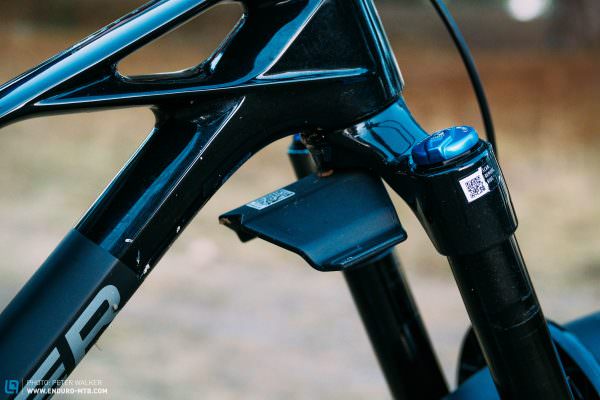
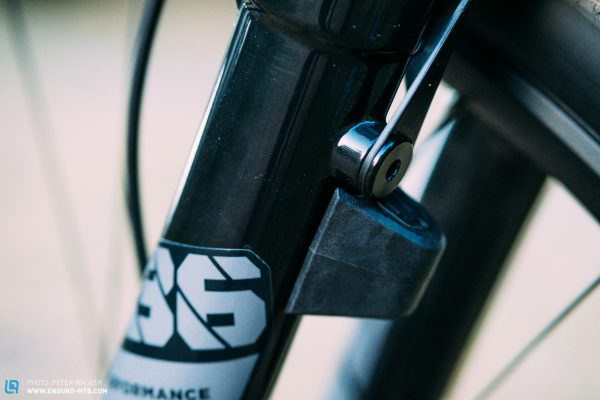
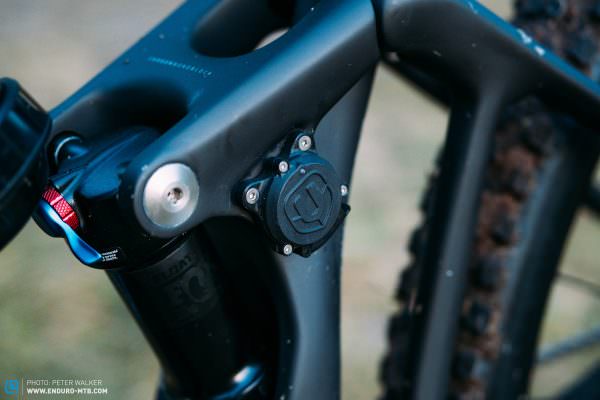
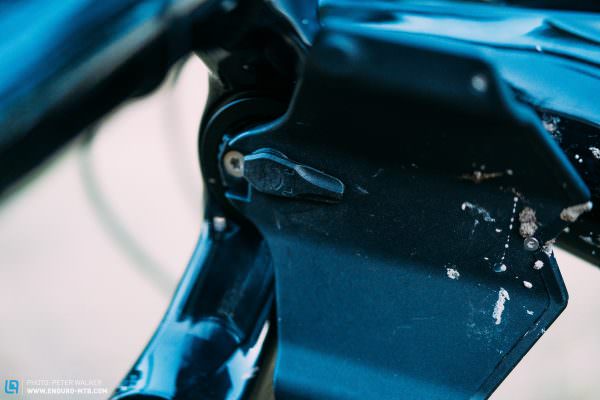


For charging, Mondraker provide a charger and dual plug with a 1.5 m long cable, with which you can easily reach both sensors. You can also use a power bank if you don’t have a power outlet in your basement. A small USB-C stick is also included, with which you can reset the system.
Before the ride with MIND
Suspension setup
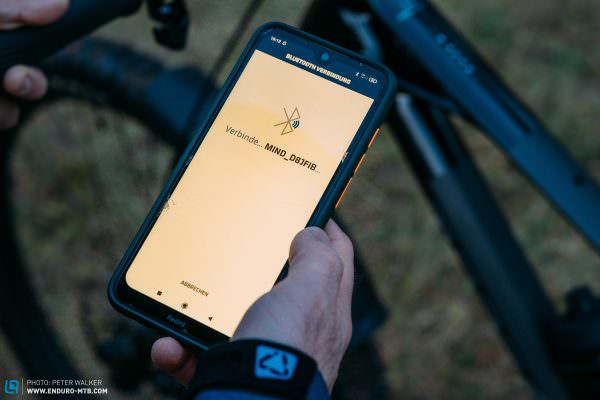
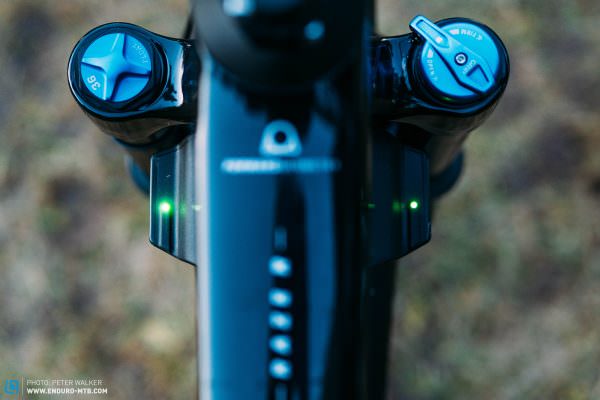
As usual, before the (first) ride the suspension has to be set up. What’s the point of having the best bike if it’s not properly adjusted to your weight and riding style? This is where the myMondraker app takes you by the hand in a sensible and unambiguous way. All you have to do is enter your weight and select your riding from three different styles: comfort, standard or racing. The app then suggests air pressure, compression and rebound settings in clicks and shows you via animated pictograms how to adjust these on the fork and shock. The pictograms correspond exactly to the installed suspension elements, so nothing can go wrong.
No matter how in-depth you want to get with your suspension, the MINDsystem takes you by the hand with its digital setup guide.
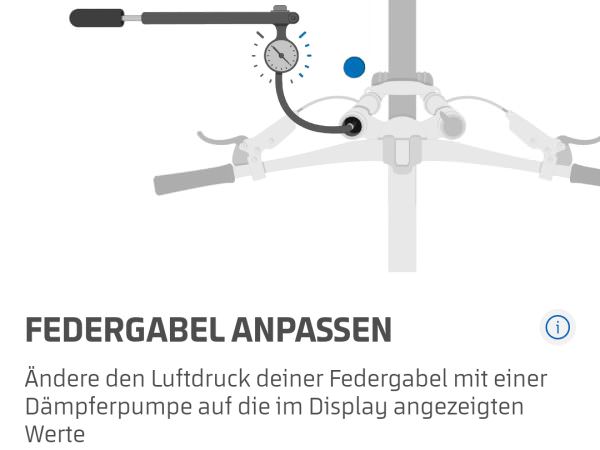
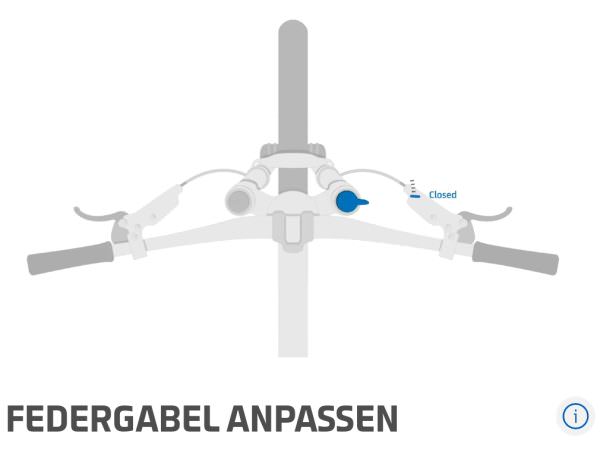


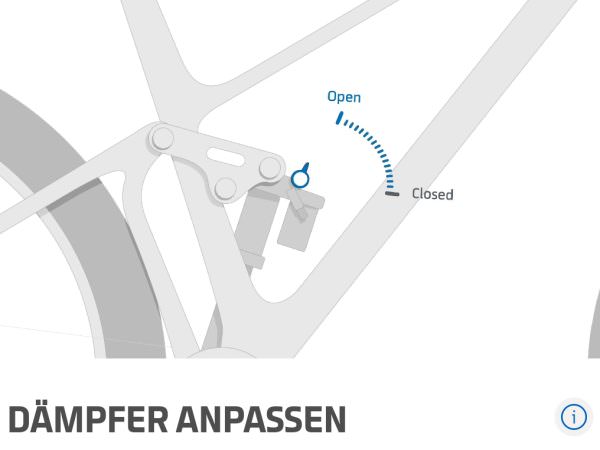
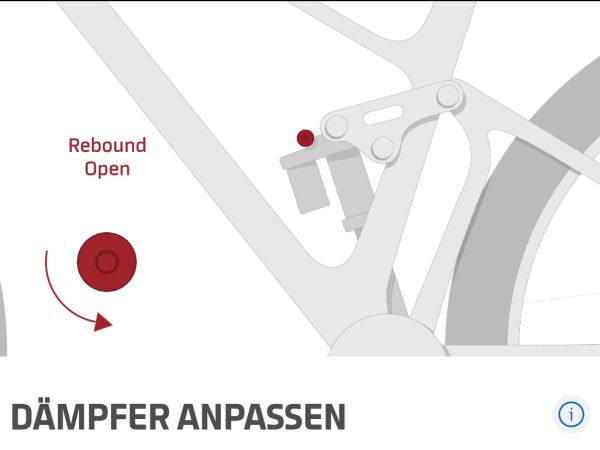
The system then checks for the correct sag setting, for which it’s helpful to have someone to help. The rider stands on the bike in the attack position while the partner confirms “Check setting” via the app. The LEDs will then show you whether you need more (white light) or less (red light) air pressure. If things are looking good, both light up green. The system also allows you to find your “Dynamic Ride Height” i.e. the negative suspension travel when moving. No matter how deep you want to get into suspension setup – or are already into it – the MIND system guides you in finding your optimal settings. It also helps technophobes who have never held a shock pump in their hands, as well as newcomers and those returning to the sport, find a decent setup with which you can go straight out onto the trails and from which you can further refine the setup. If you want to learn more about what’s important when setting up your suspension, you can find all the most important information here.
During the ride
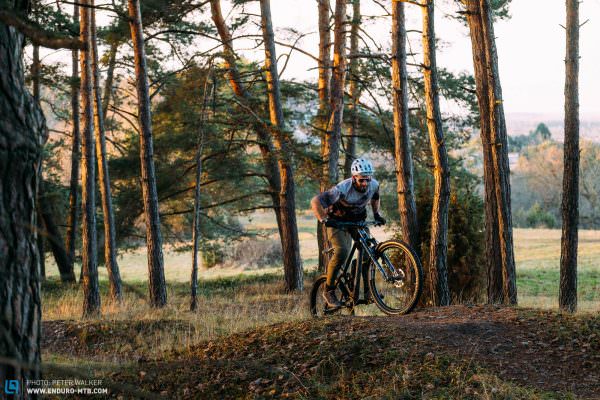

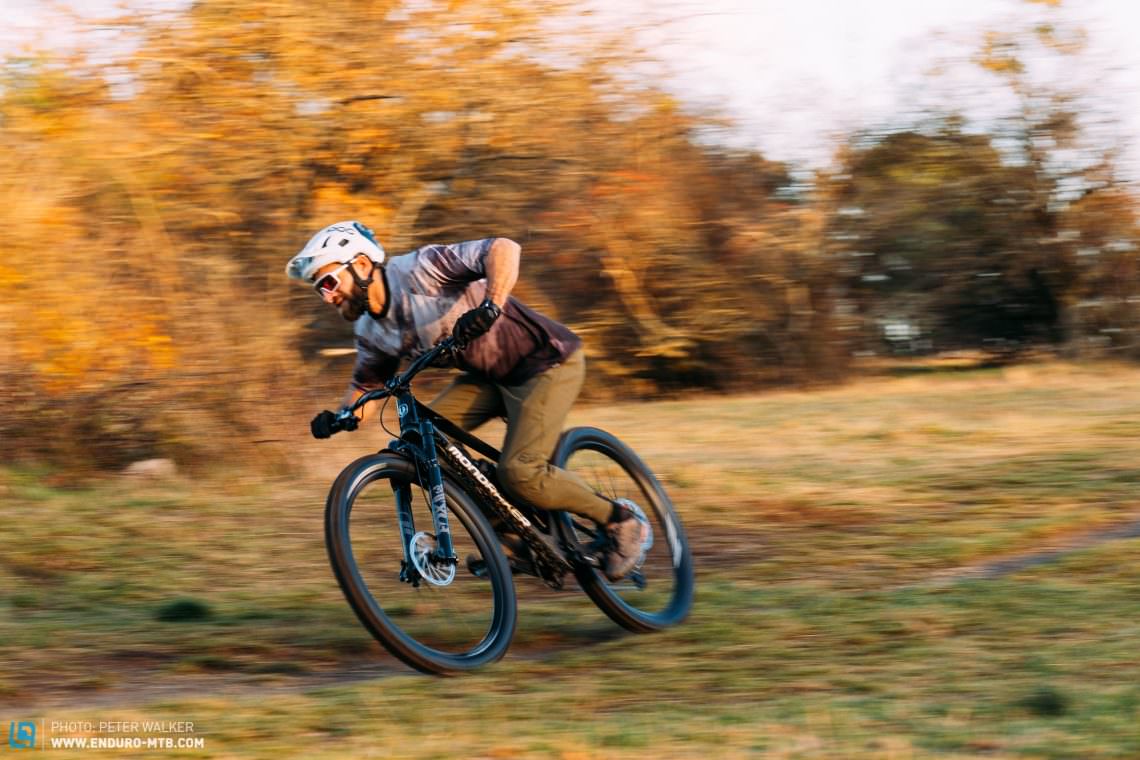
GPS recording
If you want to track a ride with the MIND system, you won’t necessarily need a smartphone out on the road but you will need one to start the recording. After starting it, the GPS might need a few seconds to find a signal. This gives you time to put away your smartphone, put on your gloves and wait for the quick green flash on the “fender” to indicate that the recording has started. If you have your mobile phone with you, you can pause or end the ride on the way to record different sections separately. Once the ride has been completed, it is saved on the bike and must be downloaded to your smartphone for viewing – whether that’s on the trail or at home is up to you. However, make sure that you have a reliable internet connection so that no data is lost during the transfer.
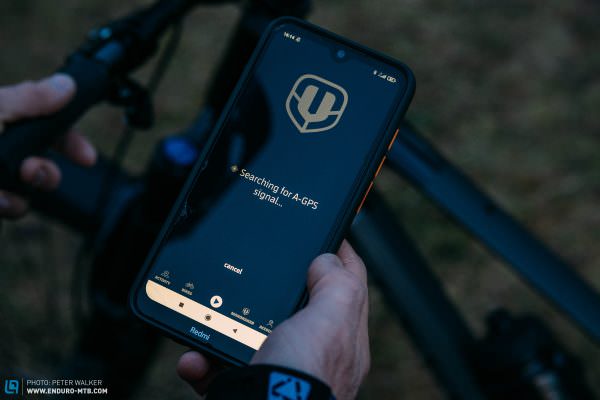
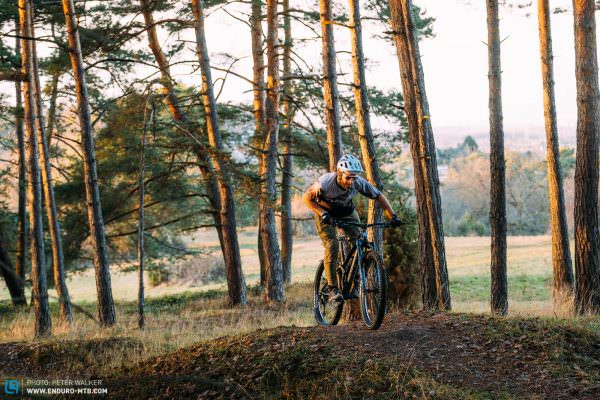
After the ride
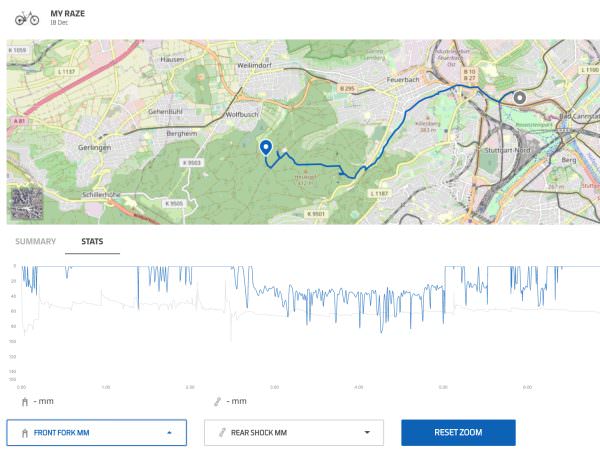

Suspension and trail analysis with Mondraker’s MIND System
After the ride is usually before the next ride. With MIND, after the ride is before your suspension analysis. After you have downloaded your ride from the bike, you can display it in the app on your mobile phone or in a larger format using the mymondraker.com web app on your computer. Recording is comprehensive: distance, duration, altitude and average speed should be familiar parameters from other tracking apps. On top of that, you’ll be able to see the maximum travel used for the front and rear suspension plus the numbers of jumps and bottom outs during your ride. The small winged symbol marks the location of your jumps, making it easy to figure out which part of the trail it was on. The air time and jump distance measurement work well and offer insights you wouldn’t otherwise have, such as the suspension travel used for the landing. In addition, it offers an incentive to compete with your mates to see who can stay in the air the longest and furthest.
The system doesn’t make suggestions for improvement like other systems that are purely focussed on suspension. It merely tells you your suspension’s current state.
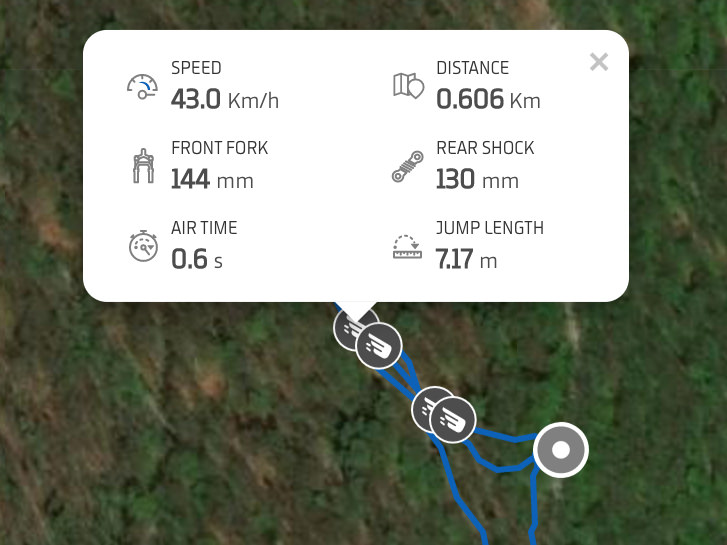
However, compared to other telemetry systems, the suspension travel curve appears to undergo some smoothing. In addition, the suspension travel cannot be displayed as a function of time, making it hard to determine whether the suspension is over- or underdamped. On the other hand, the extremes can be determined easily i.e. where jumps or bottom outs have occurred on the trail, which also contributes to determining optimal suspension setups. However, the system itself doesn’t make suggestions for improvement, as is the case with other options that focus purely on suspension setup, instead providing only a recording of the current state of the suspension. How you interpret this is left up to you. As such, you’ll need to have a basic understanding of mountain bike suspension in order to be able to understand the data in the recording. In any case, the system playfully invites you to try out and compare different setups and, with the air time measurement, gives you something to talk about at the pub. As such, it should be viewed as an add-on to GPS ride recording rather than a thoroughbred telemetry system that independently suggests setups and improvements. Nonetheless, anyone who wants a new bike and already has their eye on a Mondraker will only benefit from the MIND system.

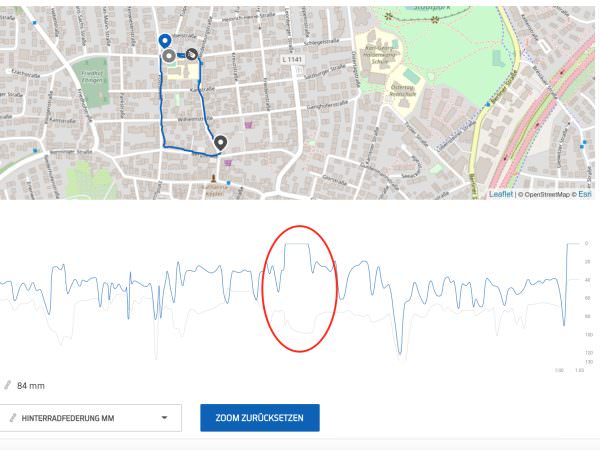
MIND connectivity
The myMondraker app works well and without errors and you don’t even need an internet connection to use it. You’ll only need it to upload the recorded ride allowing you to avoid potentially expensive roaming charges abroad. The MIND system also allows you to share the recording directly via the myMondraker app to Strava or Facebook. You can also crop the ride, allowing you to cut out the time spent putting on your gloves and packing your mobile phone, and of course, avoid ruining your average. If you love collecting data, connection to a heart rate monitor would be an interesting option but this is not yet possible.

Availability of the Mondraker MIND System
The Mondraker MIND system is available only on Mondraker bikes and cannot be purchased separately or retrofitted. So far, the system is available on only four models from the Spanish bike manufacturer: the Summum Carbon, Foxy Carbon, Raze and Crafty Carbon eMTB. Everything from long-travel downhillers to ebikes is represented, which underlines the versatility of the system. Bikes equipped with the MIND system range in price from € 5,499 for the Foxy Carbon R to € 12,999 for the Crafty Carbon RR SL eMTB. Particularly for the eMTB sector, the system can contribute to easier setup where the increased system weight and sometimes special suspension components pose additional challenges for setup.
Particularly for the eMTB sector, the system can contribute to easier setup where the increased system weight and sometimes special suspension components pose additional challenges for setup.
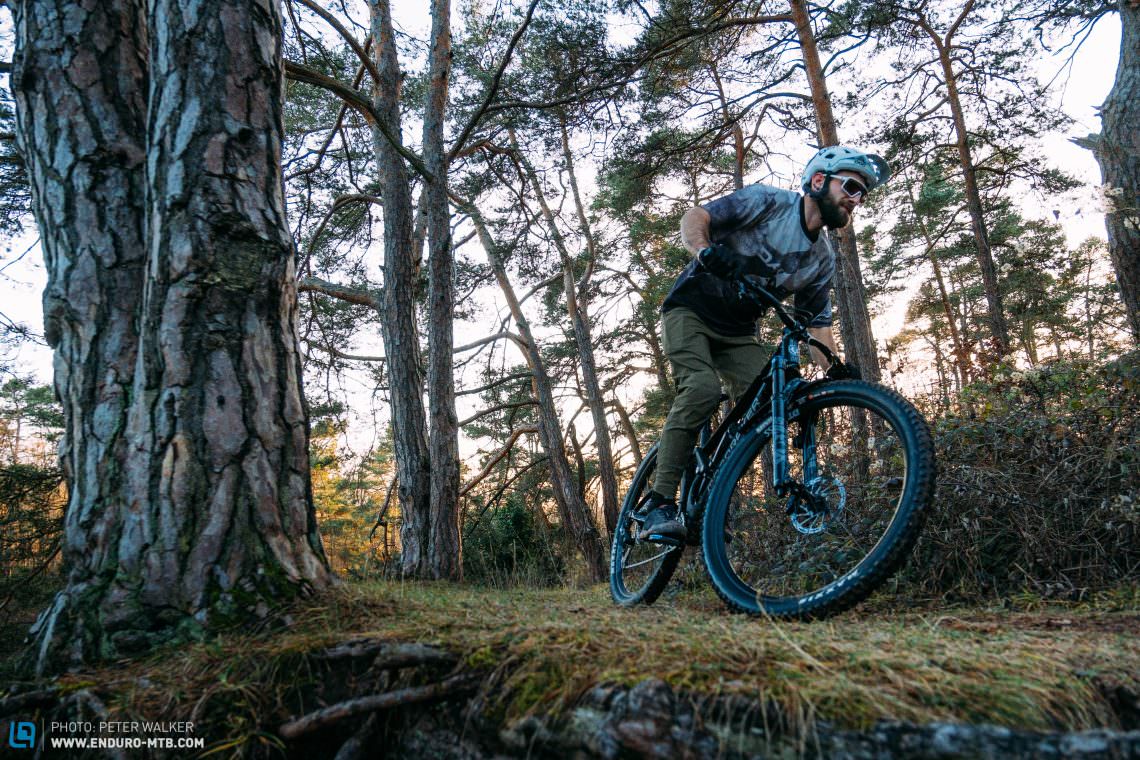
The MIND system sensibly integrates into the bike what other manufacturers have tried to do externally and links several functions together. While the basic setup and the ride recording are designed for beginners, directing them through the setup almost playfully with the guidance of the app, the air time measurement and the interpretation of the suspension travel used are more for advanced users. In any case, MIND makes it easier to get started in the increasingly complicated world of bikes and suspension and enables anyone to get a well set up bike without any prior knowledge.
Find out more at mondraker.com and the browser app at mymondraker.com.
Did you enjoy this article? If so, we would be stoked if you decide to support us with a monthly contribution. By becoming a supporter of ENDURO, you will help secure a sustainable future for high-quality mountain bike journalism. Click here to learn more.
Words: Julian Schwede Photos: Peter Walker, Mondraker









